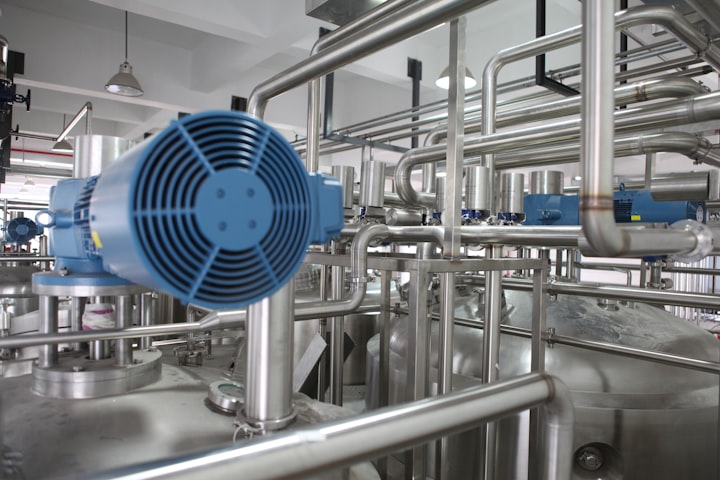Here’s Why You Should Buy Ultrasonic Flow Meters Instead of Other Types
Why Should You Buy Ultrasonic Flow Meter?

Nowadays, it is a huge requirement for one to be wise in coming up with decisions especially in terms of business-related matters. This is because numerous matters are needed to be monitored simultaneously such as overseeing daily operations, offering the best quality of products and services, and maintaining the trust customers have entrusted, all while meeting the standards set by regulatory agencies. This is not exclusive to measuring liquid flows where every drop has to be counted.
Frequently, flow is the only basis for measuring the contents in pipes and provides an idea of the current condition of these contents. Furthermore, this will also help industries develop the right course of action should there be a problem encountered during and after their regular operations.
Flow meters are used in many businesses due to its versatility since it is available in various types of devices in which you can use to cater to different measurement needs and demands depending on the type of industry.
There exist different variations of metering devices because each type has its tasks in operations most especially in complex industries wherein there are various specifications of sensory features.
Reasons Why Ultrasonic is the Best Choice
Flow measurement is indeed a very important requirement in almost all industries - may it be food processing, equipment manufacturing, and many more. As much as the traditional methods of measuring flow are still applicable, most businesses are fast-paced and have to keep up with the immediate as well as the changing demands of their consumers and investors. Thus, the need for upgraded tools and equipment that would satisfy the aforementioned. Here, we can observe that the ultrasonic flow meters are the right choices when it comes to dealing with measuring no-contact fluids.
Transit time ultrasonic flow meters are the most widely used in most industrial and commercial applications because these are proven to provide near accurate measurements.
Through the technology ultrasonic flow meters offer, these devices utilize ultrasonic waves in both the direction opposite to the fluid flow and near the exit of the pipe. For the meter to identify the velocity and flow of the fluid, the difference of the travel time and the pipe size should first be specified.
One advantageous characteristic that transit time ultrasonic meters provide is that among other flow meters, they can give detailed reports of the fluid flows. This is possible due to their capacity to measure the fluid’s speed of sound, therefore, enabling them to immediately check if there are changes in the temperature and other significant features present in the fluid.
Another type is the clamp-on ultrasonic meters which are very easy to install because it does not need cutting or tapping the pipe. They are placed on the exteriors of the process line and at the same time provide the flow near exact measurements along with affordable installation fees, continuous production and also caters to almost all pipe sizes out there. These also do not have pressure head loss, contact with liquids, and locomotive parts that require maintenance.
Likewise, these flow meter types can be considered as a substitute for traditional flow meters in which their quality often deteriorates due to occasional wear and tear and would need to be replaced quickly. Traditional flow meters would have to undergo several processes like examination, recalibration, and repair which would then take much more time and money. While in the process of repairing, users will have to look for a temporary replacement until such time that their traditional flow meter would be good to go.
How They Work
Transit time ultrasonic meters utilizes two transducers whose function is to serve as transmitters for the ultrasonic waves and as its receivers as well. The process entails these flow meters to operate both functions alternately wherein between the two transducers, a frequency-balanced blast of sound energy is released. This is then transferred to the path of the fluid and against it.
Sound energy travels faster than any other type of energy which is why the sound energy within a fluid in constant motion is carried faster most especially when it travels in the path of the fluid compared to the one that travels against the path. Here, an obvious difference in the times of flight can be observed. Usually, this occurrence is measured accurately in both pathways and the calculations are then made using the differences in the time of flight.
Upgrades on the Design
Constant innovations are what powered the improvements on the clamp-on transit-time ultrasonic flow meters to attain its progress of reaching higher levels of performance in terms of its efficiency, flexibility, and affordability, making it a valuable choice for many industrial and commercial applications.
Applications of ultrasonic flow meters are commonly observed in the agricultural, mechanical, and manufacturing industries. Today, these are applied in almost every enterprise present as of this very moment.
There are newer meters that are attached outside the pipe and also are compatible with many pipes of different sizes. They are substituted to replace old meters in ongoing installations without having to cancel the entire flow system operations, meaning shorter installation time and lesser additional costs.
The formula used for calculating the velocity of the fluid is multiplying the distance between the transducers (d) with the change in time (dt) and the Coulomb constant (K).
The meter can give the entire diagnostic report that is necessary for the effective optimization of the entire flow system efficiency and lessen increases in energy consumption.
Advantages to the Consumers
Choosing the most appropriate flow meter based on the type of application would surely guarantee an accurate, reliable, and affordable meter reading which can also last for many years. The clamp-on ultrasonic flow meter is the best choice if you are searching for a flow meter with affordable installation fees and cost of ownership.
Additionally, these meter types can also give a positive impact on the total costs of calculating flow rates and efficiency. They also provide a user-friendly interface so that operators are not bombarded with distractions while carrying out their duties.
As these meter types are situated on the outside of the pipes, they can be utilized to measure almost every kind of fluids, ranging from the most common types to the ones with higher viscosity and chemical compositions in them.
Ultrasonic flow meters are highly beneficial to many industries because they assist in different matters such as machine maintenance, leak detection, and even in the overall physical setup of the place.
Conclusion
There are different applications in measurements through the technologies brought to us by ultrasonic devices. Transit time techniques are well applied in the measurement of fluids and various flow meter types. Thus, the overall performance of this particular equipment and its varying functions when applied to certain types of applications are now understandable.
About the Creator
Daniel Medalla Jr.
Daniel is a writer and a content marketer who writes different/general topics. During his free time, he loves reading books and novels.






Comments
There are no comments for this story
Be the first to respond and start the conversation.